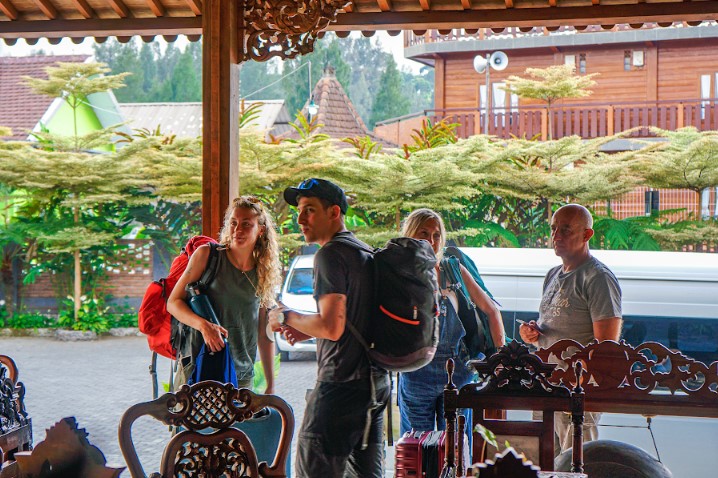As cases begin surging once more in the US, millions of people are expected to travel for the Thanksgiving holiday, and health workers and hospital systems are now preparing for an influx of Covid patients after having little time to recover from the summer surge.
Last year, there was a major surge in cases around the holidays. But this year, new tools could blunt the spread – if they are taken up quickly.
US scientific agencies on Friday recommended boosters for all adults six months after mRNA vaccination, and children over the age of five recently became eligible for vaccines.
Existing treatments like monoclonal antibodies are highly effective if given early, while two promising antiviral medications from Merck and Pfizer may be authorized in coming weeks. But the new treatments may come against a backdrop of rising cases during the holiday season.
“It is a race against time,” Kyle Enfield, the associate chief medical officer of critical care at University of Virginia Health, said.
More than 92,000 Americans are now testing positive for Covid-19 each day, and more than 1,000 people are dying from the virus every day, according to the US Centers for Disease Control and Prevention. Cases are rising in a majority of states, with hotspots in the midwest, north-east and parts of the south-west.
There have already been more Covid deaths this year than there were in 2020, due to the more transmissible Delta variant and low vaccination rates across much of the country, and total deaths from Covid-19 in the US may reach 1 million by spring.
Even so, about 20 million passengers are expected to fly this Thanksgiving, the US Transportation Security Administration (TSA) announced last week. These numbers are approaching the record-breaking travel seen around Thanksgiving in 2019, when 26 million people were screened for flights.
“We anticipate that travel may be very close to pre-pandemic levels this holiday,” David Pekoske, administrator of the TSA, said in a statement.
Given the cooler weather and upcoming holidays, “I do think that we are likely going to see an increase in cases over the next couple of weeks,” said Enfield. “Winter can be a busy time in the hospital because of the regular flu and pneumonia [cases] that people get, but this year, I think we’re going to add in ongoing Covid transmission.”
But it’s hard to predict how big the next wave will be, he said – and much of these calculations depend on vaccination rates as well as existing and potential medications.
Many hospitals in Massachusetts, a state seeing some of the fastest-growing cases and hospitalization rates in the country, are already at or over capacity, Emily Rubin, a pulmonary and critical care physician at Massachusetts General hospital, told the Guardian.
It’s not just Covid filling the wards. “We have a large number of ICU patients who are in the hospital with non-Covid illnesses,” she said. Part of the reason has to do with delayed care during the pandemic that leads patients to get sicker than they would have otherwise been.
Experts are hoping that even if Covid cases rise, the vaccines will help keep hospitalizations and deaths lower than last year.
“It gives me a little bit of hope that we’re seeing some breakthrough infections that are not as severe as the ones that we’ve seen in the past,” Enfield said. “But I think that the next couple of days and weeks are really going to be telling for what the real impact is going to be.”
In the meantime, hospitals are hiring as many nurses and clinicians as possible and increasing the number of patients who can receive monoclonal antibodies at infusion centers.
People experiencing Covid symptoms should be tested immediately, and those who test positive and are at high risk of severe illness should immediately undergo monoclonal antibody treatments.
But providing the monoclonal treatment is challenging, because it usually requires an hour-long infusion at a specialty center.
“We have increased capacity substantially over the past couple of months, and we are doing everything we can to extend that to keep up with demand. But the demand has grown substantially as we’ve seen the rising cases,” Rubin said.
Having enough staff for these centers has been difficult, Rubin said, as health systems across the country face worker shortages.
“Since the whole system is very stressed, every step along that chain can take some time,” Rubin said.
New antivirals could be much easier to give to patients, and the Biden administration has set aside billions for the new medications. First, however, they need to be authorized by the US Food and Drug Administration and then distributed throughout the country.
“We’re eager to see them. We’re also eager to see the data in more detail,” Rubin said. “We haven’t, of course, seen published, peer-reviewed data, but we will be eager to see those.”
Like monoclonals, the antivirals appear to work best early in the course of an illness, so getting test results quickly and then receiving the medication soon after would be key.
Easily accessible antivirals would also help in rural areas and places that don’t have infusion centers, helping address inequities that have plagued some communities – especially communities of color, which have been hit disproportionately hard by the pandemic.
With “all of these therapies, there’s concern that they are not being distributed equitably and that different communities of patients have differential access, and that’s a big concern”, Rubin said.
But if the pills are easy to take anywhere in the country and work well to prevent hospitalization and death, she said, “that would be sort of the holy grail”.
Medications for later in the course of illness – when patients usually show up at the hospital – still need to be developed.
In the meantime, Rubin and Enfield urge people to take as many precautions as possible: getting vaccinated against Covid and the flu, which may be particularly bad this year, as well as wearing masks and distancing. “There is a lot that every person in the public can do right now to help out,” Enfield said.
“All of us who’ve been doing this for a while are tired,” Enfield said. “We’re really hopeful that soon we’ll see the number of cases continue to go down and we’ll have a chance to breathe a sigh of relief.”






More Stories
Los Angeles Party Bus Rental Service: The Ultimate Guide to Luxury Transportation
U.S. DOJ Sues to Block JetBlue, Spirit Merger
Mexico ‘Do Not Travel’ advisory in effect for US residents ahead of spring break